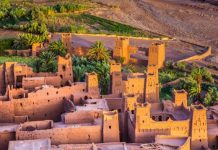As part of its long-term “Airports 2030” strategy, Morocco’s national airports authority (ONDA) has officially launched the tender process for the construction of an ambitious new terminal at Casablanca’s Mohammed V International Airport. With a projected cost of 10 billion dirhams, this expansion is being described as one of the most significant infrastructure undertakings in ONDA’s history.
The terminal is designed to handle 20 million passengers annually upon completion, with the potential to expand that capacity to 30 million. Covering a massive 600,000 square meters, the terminal will take on an “H” shape, incorporating a central processing area and two large concourses. Passenger flow, baggage handling, and boarding access are being carefully engineered for maximum efficiency. The terminal will also connect directly to Morocco’s future high-speed rail line linking Tangier and Marrakech, enhancing intermodal access.
Architectural responsibilities for the terminal have been awarded to a consortium composed of Ala Concept, RSHP Architects, and Egis Bâtiment International. Their design prioritizes operational performance, user-friendly layouts, and the integration of cutting-edge technology. The construction will follow a modular approach, favoring prefabricated components to accelerate timelines, optimize resource use, and reduce environmental impact.
A preliminary call for expressions of interest went out earlier in May to identify qualified contractors or consortiums capable of handling detailed engineering and construction. The current tender—divided into nine major work packages—sets a 40-month completion window. Earthworks, already 40% complete, are being handled by STAM, one of Morocco’s key construction firms.
Separate tenders will be issued for various related elements, including airside infrastructure, outdoor development, and specialized equipment. The wider project scope also features a brand-new runway and an upgraded air traffic control tower, further modernizing the airport’s capabilities.
This massive expansion aligns with broader strategic goals, particularly the growth of Royal Air Maroc. Casablanca is being positioned as a high-capacity international hub, with the goal of elevating its status to that of a premier regional gateway. Beyond aviation, the project is expected to deliver major ripple effects across the economy—boosting job creation, stimulating local industry, and enhancing Morocco’s appeal as both a tourist destination and an investment hub.





